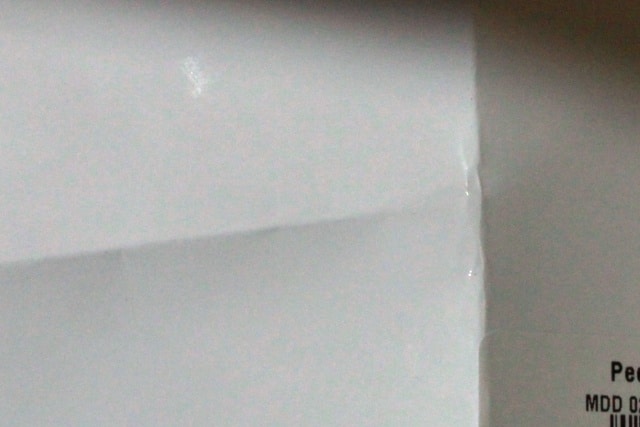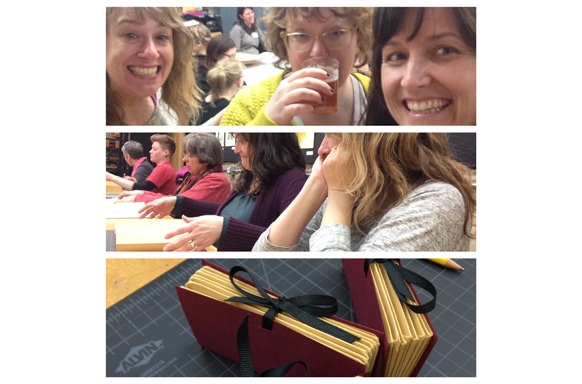We love printing books here at Bookmobile so much so that we even do it in our spare time. And why wouldn’t we? We are in Minneapolis, one of the most literary cities in the country. Besides all the super presses like Coffee House Press, Graywolf Press, Milkweed Editions, Minnesota Historical Society Press, University of Minnesota Press, and countless others, we’ve also got The Loft, Rain Taxi, The Twin Cities Book Festival, and the Minnesota Center for Book Arts (MCBA).
MCBA has a fantastic series of classes called Dirty Works. They’re held on the first Friday of every month and start with mingling and a beer from a local brewery. Participants then learn about one of many book art techniques: marbling paper, screen printing, sewing books, and more. Classes sell out quickly, so if you see one you like, register! Last year I took a class on sewn binding, and this year my coworkers Rachel Holscher (Manager of Design and Digital Book Publisher Services) and Connie Kuhnz (Book Production Coordinator) joined me to learn how to make a blizzard book.
A blizzard book is a tiny scrapbook, and the concept was created by book artist Hedi Kyle when she wasn’t able to get to work one day due to a blizzard. It’s made by folding a really long sheet of paper over and over, to create pockets to tuck things into, and then adding a cover.
Our instructor was Sue Bjerke, and she was like the Ron Swanson of book making! Bjerke was very deadpan in the best way, and direct and clear. My favorite take-away was “Don’t expect something you’re doing for the very first time to turn out well.” She also gave the best sermon defining paper grain that I have ever heard. All machine-made paper has a grain to it, just like you’d see in a piece of wood. The grain of paper is usually not visible to the eye, but when you’re making a book, turning a page, or folding paper, it makes a huge difference in which way the paper wants to turn or crease.

Photo book back cover, creased to show paper grain. The vertical crease is parallel to the spine of this photo book. It is irregular because the grain of the paper is perpendicular to the spine. The smooth horizontal crease runs with the grain. Running grain parallel to spine is fundamental to a well-bound book.
Sue talked about how to test the grain of a paper too: the bounce test, to see if fights being folded over one direction more than the other; and the creasing test, to see (as pictured) if the crease is clean or irregular.
We then got to folding. The blizzard book required about 30 folds. Great instructions can be found here. Be warned, you need a really long piece of paper, and thick is better than thin—with all the folding required, a thin stock will start to tear. Once folding was done, we cut our cover pieces to size, added a ribbon for closure, and taped it up. As you can see above, they look great! As soon as I got home, my daughter took mine for Pokémon card storage.
We’ll be taking another class there this Spring, but we haven’t decided which yet. Check out the MCBA Dirty Works schedule and join us!
Any book printing questions? Let me know!

